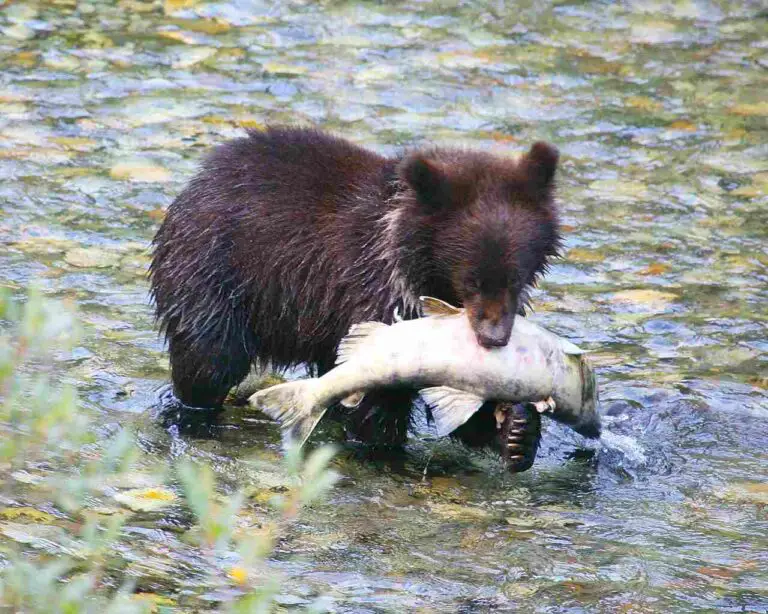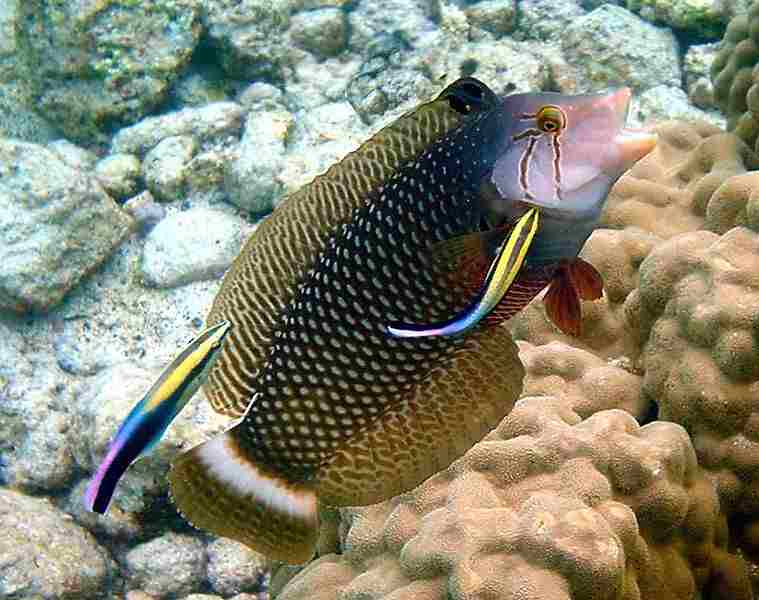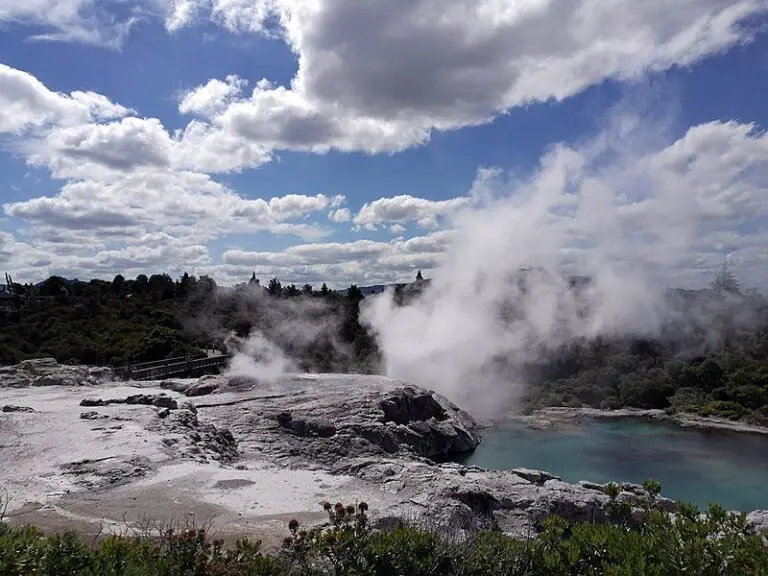4 Main Types of Ecosystems and their Features Explained
Types of ecosystem are terrestrial, freshwater, marine, and artificial ecosystems respectively. This article discusses the types of ecosystems and their features, according to the following outline;
1). Terrestrial Ecosystem
A terrestrial ecosystem is one which occurs on land [1].
Unlike aquatic ecosystems, the terrestrial ecosystem is not dominated by water.
There are several distinct characteristics of terrestrial ecosystems. One of these is the predominance of soil. Soil plays a key role in the terrestrial ecosystem, by supporting the growth of plants (which are the primary producers of energy) and providing a habitat for other organisms.
Diversity is yet another characteristic of the terrestrial ecosystem. This type of ecosystem can be differentiated into an atmospheric portion and a subterranean portion.
The atmospheric portion is composed of gases which are produced by, and useful to, the ecosystem. The subterranean portion comprises of both soil and water, although the distribution and abundance of water is highly variable.
Terrestrial ecosystems are very dynamic. They are subject to continuous environmental changes driven by processes like weather fluctuations and climate change.
One of the main reasons for the dynamic nature of the terrestrial ecosystem, is the intensity of sunlight.
Solar energy is much more available in terrestrial ecosystems than aquatic ecosystems. This energy is what makes photosynthesis possible, and sustains the entire ecosystem, as illustrated by the energy pyramid.
Gases are also abundant in the terrestrial ecosystem [4]. Examples of such gases include nitrogen dioxide, carbon dioxide and oxygen.
Organisms in terrestrial ecosystems are adapted for terrestrial life. These organisms have evolved across a wide spectrum of characteristics, including swimming, crawling, and flight capabilities, as well as specialized breathing mechanisms.
Terrestrial organisms range from mammals like humans; rodents and marsupials, to reptiles like snaked, as well as numerous species of birds.
There are several examples of terrestrial ecosystems. They include tropical rainforests, deserts, tundras, grasslands, and taigas.
Among the above examples, tropical rainforest is the most widespread as well as ecologically diverse terrestrial ecosystem.
2). Freshwater Ecosystem
Freshwater ecosystem is an aquatic ecosystem that is dominated by freshwater.
Freshwater is any naturally-occurring water which contains low concentrations of dissolved constituents like salts.
It is important to note that freshwater ecosystem may occur across a wide range of temperatures, such that the water itself may be warm, cold or frozen.
A freshwater ecosystem can also be described as an aquatic system with low concentration of salts.
There are various criteria which have been used to differentiate and classify freshwater ecosystems. Such factors include vegetation type, temperature, sunlight penetration and flow velocity.
Two important sub-types of freshwater ecosystem are static (or still-water) and flowing freshwater ecosystems.
Continuous and effective interactions occur among the organisms in a freshwater ecosystem. These interactions include feeding and reproduction, and help to ensure the continuity of life in this type of ecosystem.
It is also important to note that there are interactions and close relationships between the terrestrial ecosystem and aquatic ecosystem in general. One of the objectives of sustainable development is to ensure that these interactions remain productive, and do not have negative effects on either of the two types of ecosystem.
There is a fairly-wide range of biodiversity in the freshwater ecosystem. This includes various aquatic plants, amphibious organisms like frogs, crustaceans like crabs, and numerous species of fish.
Examples of freshwater ecosystem include rivers, streams, lakes and ponds.
3). Marine Ecosystem
The marine ecosystem is made up of seawater, its environs, inhabitant organisms and physicochemical interactions. This is the most widespread type of ecosystem on Earth, occupying up to 70 percent of the planet’s surface [5].
Physicochemical interactions in the marine ecosystem, leads to the formation of geographic seafloor features like canyons, guyots and seamounts. These interactions also lead to reproduction, feeding, and a host of marine chemical reactions.
It is necessary to state that the marine ecosystem differs from the freshwater ecosystem in terms of the chemical composition of water.
While freshwater ecosystems are dominated by water which has low dissolved-salt concentration, the reverse is the case for marine ecosystems.
Some of the dissolved salts found in the marine ecosystem (in seawater) include sodium chloride, magnesium sulfate and calcium carbonate.
The marine ecosystem is very significant due to its relevance to all other types of ecosystem. In addition to containing a large portion of Earth’s oxygen, it harbors a vast number of species with diverse biological characteristics and complex organic relations to each other.
Marine organisms include sharks, turtles, seals, urchins, starfish, lobsters, whales, various saltwater fish species, algae and lichens.
There have been different schemes used to sub-categorize the marine ecosystem. One of these is based on geographic characteristics.
Since the marine ecosystem includes the environs of saltwater bodies, it may be sub-categorized into Coral Reef, Deep Sea, Hydrothermal Vent, Salt Marsh, Kelp Forest, Mangrove, Sandy Beach, and Rocky Shore.
These subcategories are all part of the marine ecosystem, although the differ in their physicochemical attributes and biotic components.
For example, the rocky shore inhabits organisms like seagulls, which cannot be found in the ocean itself.
Another scheme by which we can sub-categorize the marine ecosystem, is based on water depth.
Subcategories under this scheme include Littoral (or Intertidal), Neritic, Bathyal and Abyssal.

Brackish ecosystem is an intermediate type, which forms when freshwater and marine ecosystems intersect.
It is not a main type of ecosystem, and is dominated by brackish water; a type of water which has salinity levels that are intermediate of saltwater and freshwater salinities.
Brackish water ecosystem occurs where freshwater bodies flow into marine water bodies. Examples of such locations include estuaries [3].
The salinity of brackish water varies broadly, depending on the mode and degree of fresh/salt water mixing.
Although it is not as salty as marine water, brackish water is not potable (cannot be used for domestic purposes like drinking).
It is usually required to undergo filtration and water purification processes which are generally referred to as Desalination, before it can be used for domestic purposes. Ultrafiltration and Reverse Osmosis are some terns used to describe the purification processes required to desalinate brackish water.
Brackish ecosystem also inhabits some organisms like the Archer fish and alligator.
4). Artificial Ecosystem
An artificial ecosystem is one which is created and maintained by humans [2].
Like natural ecosystems, the artificial ecosystem is composed of abiotic and biotic components.
A typical artificial ecosystem is designed to resemble a natural ecosystem. The main difference between the two categories is in terms of sustainability.
Whereas natural ecosystems can be sustained spontaneously by natural processes, artificial ecosystems are not self-sustaining, but generally depend on human effort to remain functional.
The main goal behind the development of artificial ecosystems; is to hasten the pace of sustainable development. This is necessary because of the prevalence of environmental degradation as a result of technological growth, industrialization and population increase.
Artificial ecosystems are also less complex than natural ecosystems. They are characterized by lower biodiversity, and more specialization to meet specific needs of the ecological community.
Urban ecosystem is an example of an artificial ecosystem. Within this ecosystem, other smaller units that represent the artificial ecosystem include artificial ponds, zoo parks, aquariums, botanical gardens, orchards, farmlands, and dams.

Conclusion
The four types of ecosystem are terrestrial, freshwater, marine (saltwater) and artificial ecosystems.
These ecosystems differ in terms of their abiotic factors (geographic and geologic features) and their biotic factors (organic inhabitants, organic physicochemical processes).
Both marine and freshwater ecosystems are part of the broader category of aquatic ecosystems. These are dominated by water, aquatic organisms and processes.
While freshwater ecosystem is exemplified by rivers, lakes and streams; marine ecosystem is exemplified by oceans.
A subcategory of aquatic ecosystem is the brackish ecosystem. It is not a main type of ecosystem because it is simply a product of the intersection of freshwater and marine ecosystems.
Terrestrial ecosystem occurs on land and is dominated by soil, atmospheric gases and terrestrial geographic features. Examples which fall within this category include tropical rainforests, tundras, taigas, and deserts.
The artificial ecosystem is a product of human civilization and sustainable development. It is both created and maintained by humans, and resembles natural ecosystems by being comprised of biotic and abiotic factors. Example of an ecosystems under this category is the urban ecosystem.
References
1). Beraldi, H. (2013). “Early life on land and the first terrestrial ecosystems.” Ecological Processes 2(1). Available at: https://doi.org/10.1186/2192-1709-2-1. (Accessed 8 March 2022).
2). Fleming, E. (2019). “What is artificial or man made ecosystem?” Available at: https://www.sidmartinbio.org/what-is-artificial-or-man-made-ecosystem/. (Accessed 8 March 2022).
3). Geyer. W. R. (2019). “Where the Rivers Meet the Sea: The transition from salt to fresh water is turbulent, vulnerable, and incredibly bountiful.” Available at: https://www.whoi.edu/oceanus/feature/where-the-rivers-meet-the-sea/. (Accessed 8 March 2022).
4). Heimann, M., Reichstein, M. (2008). “Terrestrial ecosystem carbon dynamics and climate feedbacks.” Nature 451, 289–292. Available at: https://doi.org/10.1038/nature06591. (Accessed 8 March 2022).
5). Sen, D. (2019). “Types of Aquatic Ecosystems.” Available at: https://sciencing.com/types-aquatic-ecosystems-6123685.html. (Accessed 8 March 2022).


